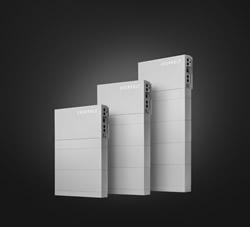As a drop-in solution with Jet A/A-1 commercial aviation turbine fuel, this new Amyris-Total fuel can be seamlessly included in commercial aviation following the ASTM validation and amendment of the global standard.
Renewable Jet and Diesel Fuel
Joel Velasco | Amyris
What is your new jet fuel?
 Amyris and Total developed an approved, drop-in jet fuel that contains up to 10% blends of renewable farnesane produced from plant sugars. This renewable fuel meets all the fuel criteria required for Jet A/A-1 commercial aviation turbine fuel.
Amyris and Total developed an approved, drop-in jet fuel that contains up to 10% blends of renewable farnesane produced from plant sugars. This renewable fuel meets all the fuel criteria required for Jet A/A-1 commercial aviation turbine fuel.
What are the key benefits of Amyris’s jet and diesel fuels?
The introduction of the Amyris-Total renewable fuel into the aviation industry enables a meaningful reduction of greenhouse gas (GHG) emissions without sacrificing performance. Initial studies show that this renewable jet fuel can reduce GHG emissions by as much as 90% when compared with fossil Jet A1. The Amyris-Total jet fuel is 30% more efficient in land use compared to other renewable fuels (in terms of liters/hectare or gallons/acre). The fuel will become approximately 70% more efficient when new technologies, like cellulosic feedstocks, become mature.
Fossil fuel prices are highly volatile as they are impacted by oil price changes and exchange rate variations. The Amyris-Total renewable jet fuel reduces the exposure of airlines to unpredictable fossil fuel prices in the long-term. This summer’s World Cup has brought an increased level of traveling to and from as well as throughout Brazil, making this fuel an especially attractive option.
What are the future planned uses for this jet fuel?
According to a PEW Research Center analysis, 95% of Brazilians see global climate change as a serious problem, more than any other any other country in the study. That’s part of the reason why Brazil’s leading airline, GOL, chose to be the first to announce they would begin flying with our renewable jet fuel. GOL recently announced its plans to begin the first international commercial flight route from the U.S. to Sao Paulo, Brazil using our fuel on its Boeing 737 fleet. Up to a 10% blend of farnesane will be used on the U.S. to Brazil routes starting with initial flights toward the end of July 2014.
How do you make your jet fuel and diesel?
We use our industrial bioscience technology platform to convert plant sugars into a variety of hydrocarbon molecules through yeast-based fermentation. Our building block molecule for our fuels is called farnesane, which the airline industry and governments have approved for use as a blend with fossil jet fuel. Our renewable fuel is based on abundant and globally available biomass, using a reliable and sustainable production process, designed to meet the growth in energy demand, and is fully drop-in with fossil fuels for transportation, including jet fuels.
When will the jet and diesel fuel be available for commercial use in planes and buses?
The jet and diesel fuels are available today. In addition to our partnership with GOL, with our partner TOTAL, we have advanced discussions with several other major international airlines that are seeking flights with renewable fuels capable of reducing emissions and improving performance.
There are many buses in Sao Paulo and Rio de Janeiro running on blends of Amyris’s renewable diesel this summer both during and after the World Cup. With as many as 400 buses using Amyris's diesel everyday over the last couple of years, these buses have logged more than 20 million miles with a blend of renewable diesel.
What impact do you hope to have with the use of your fuels?
Amyris and Total are providing a drop-in, low-carbon fuel that will serve the sustainability and environmental goals set by the aviation industry. The introduction of the renewable fuel into the aviation industry enables a meaningful reduction of greenhouse gas emissions. This renewable fuel is meeting an important market need that no other product has done so far in the aviation industry.
Are there regulations governing the production and use of these fuels that need to be addressed?
The Amyris-Total renewable jet fuel has been validated by the ASTM, the definitive standards body for jet fuel globally, and is now being marketed for Jet A/A-1 commercial aviation turbine fuel. Initially, plans call for up to a 10% blend of renewable content in the fuel.
What is the environmental and economic impact of your fuel – good and bad?
The aviation industry contributes about 3% of GHG emissions and growing -- in the most vulnerable area – the upper atmosphere. As climate change becomes a more prominent issue and GHG emissions are increasing, the aviation industry has committed to ambitious goals, including the reduction of its GHG emissions by 50% by 2050 with an intermediate step targeting no greenhouse gas emissions growth by 2020. The introduction of the Amyris-Total renewable fuel into the aviation industry enables a meaningful reduction of greenhouse gas emissions with superior performance.
Joel Velasco
Joel Velasco is Senior Vice President at Amyris, an integrated renewable products company focused on providing sustainable alternatives to a broad range of petroleum-sourced products. He brings more than 10 years of experience in international public policy, with a focus on U.S.-Brazil business relations.
The content & opinions in this article are the author’s and do not necessarily represent the views of AltEnergyMag
Comments (0)
This post does not have any comments. Be the first to leave a comment below.
Featured Product

